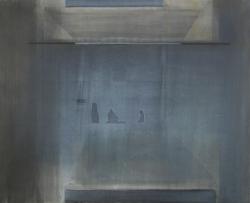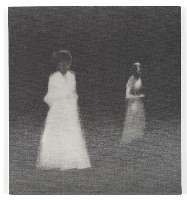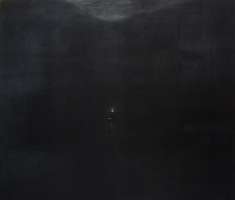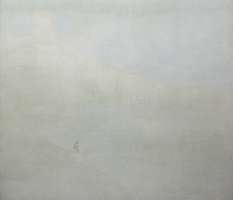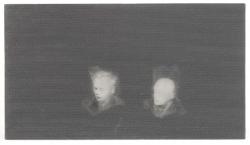
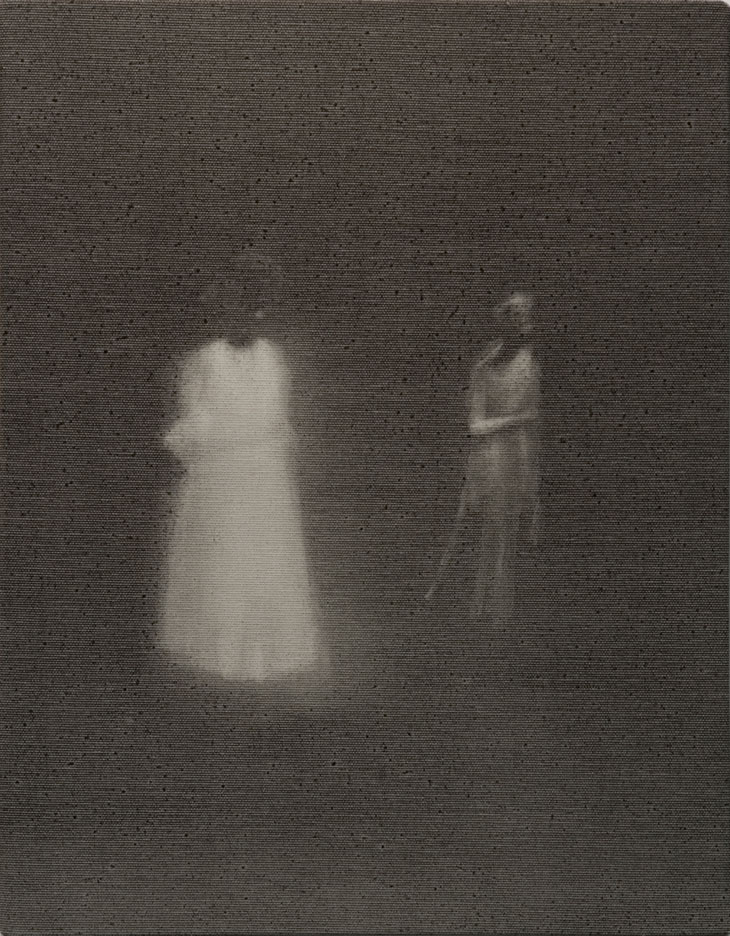
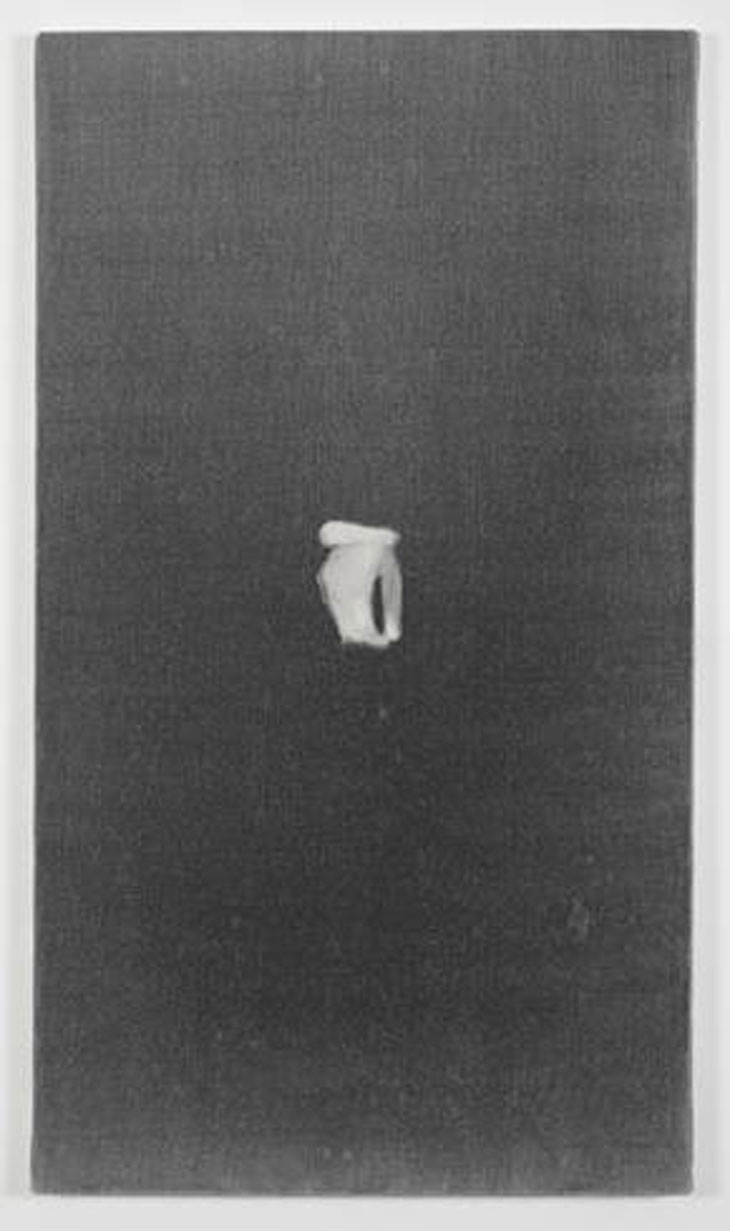
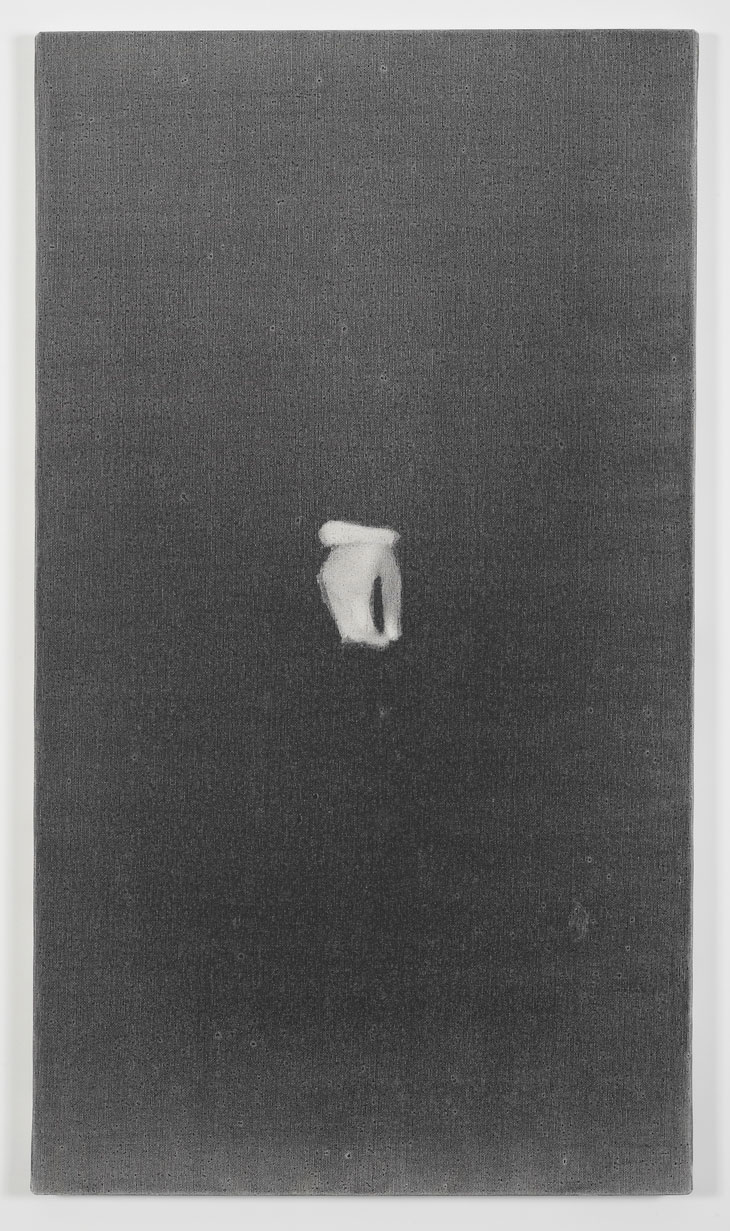
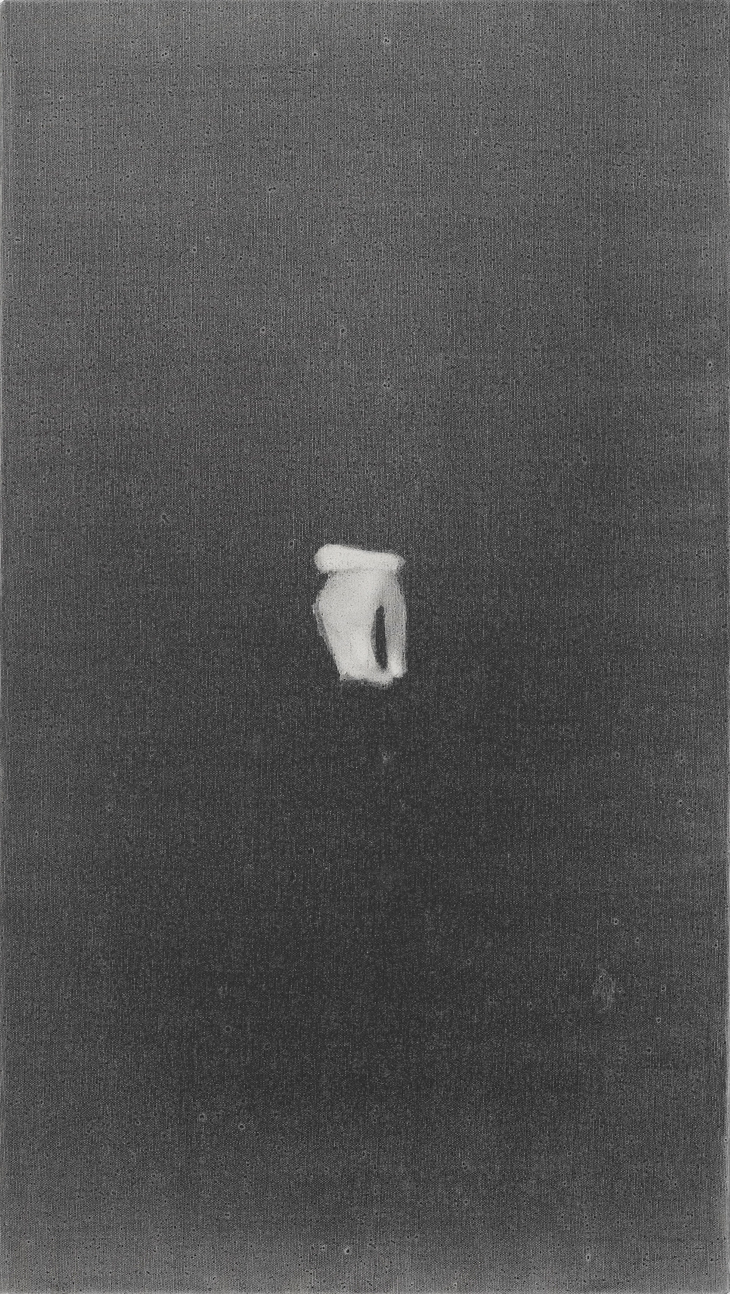
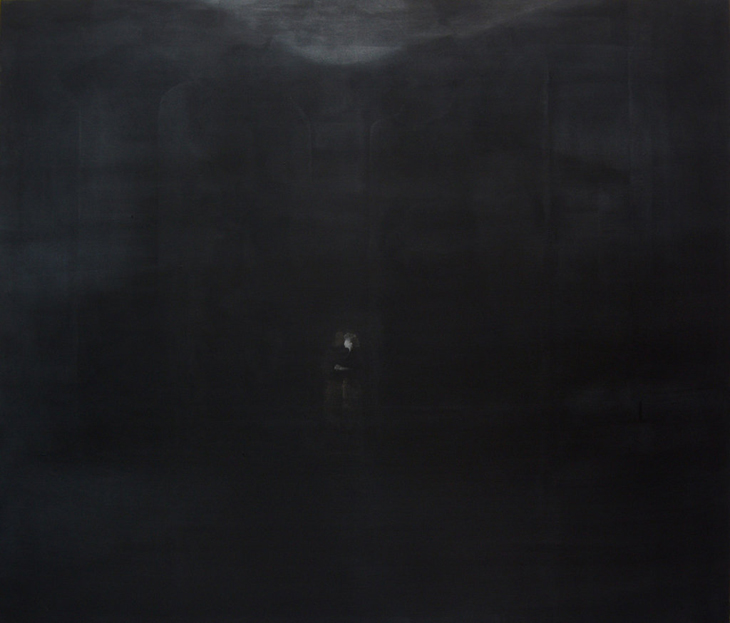
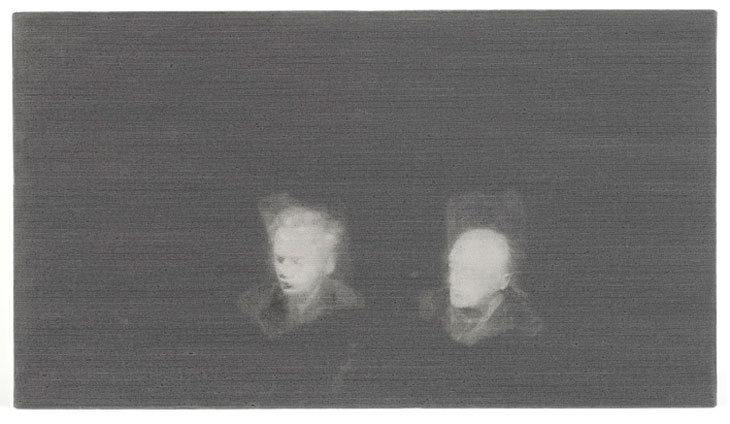
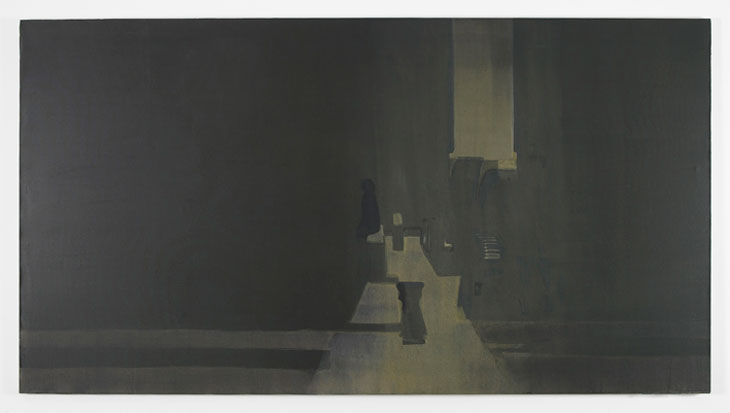
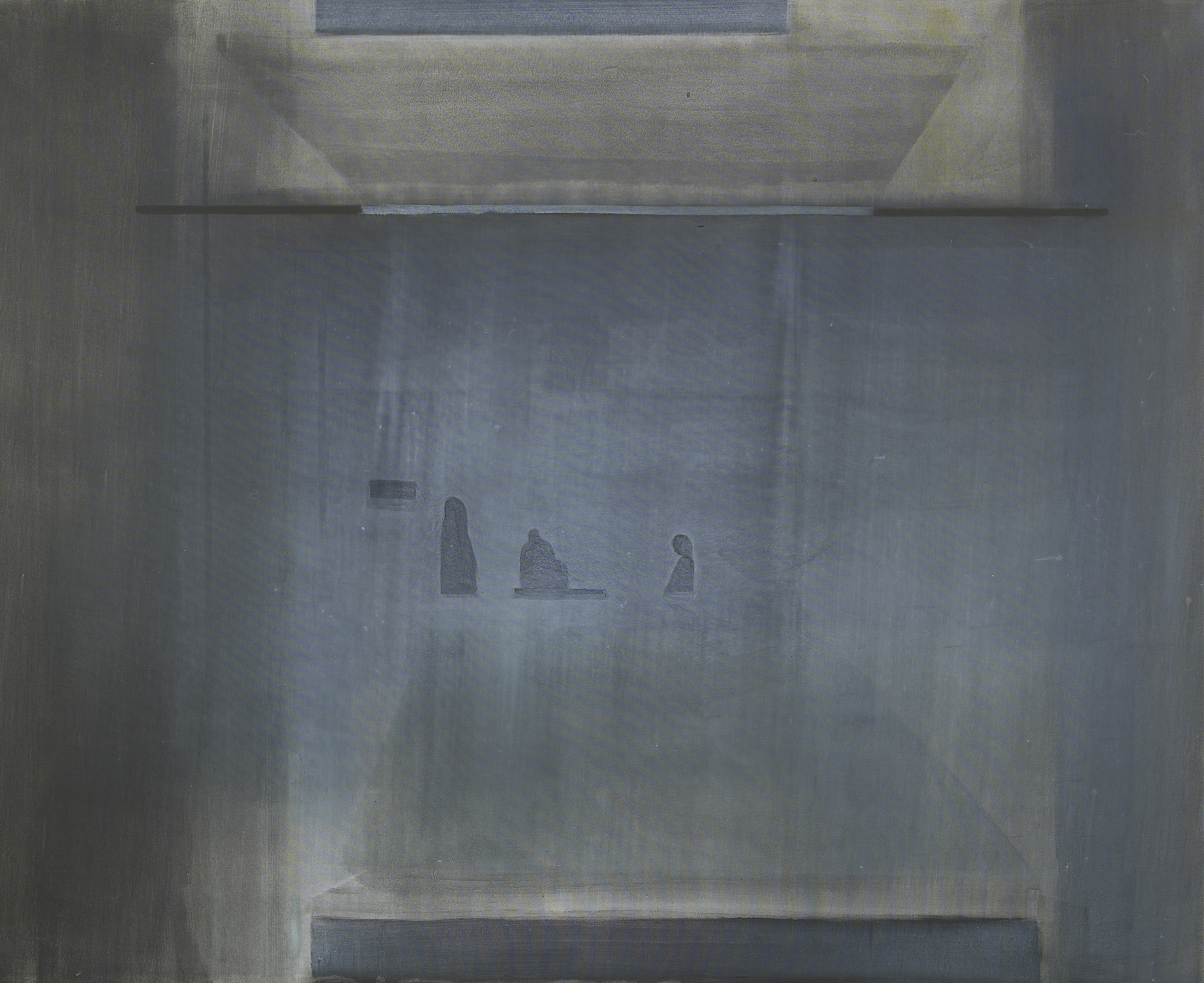
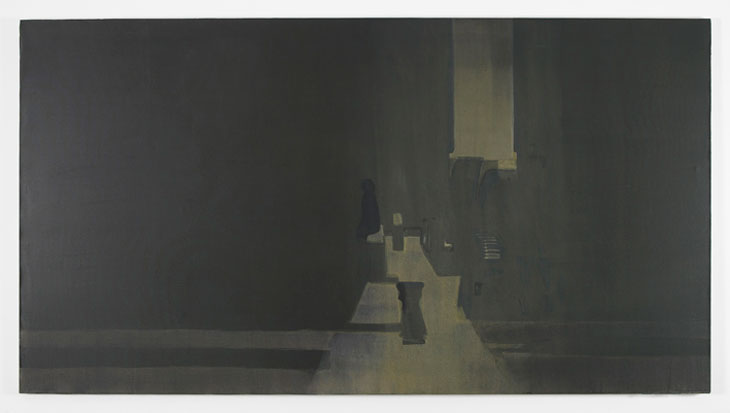
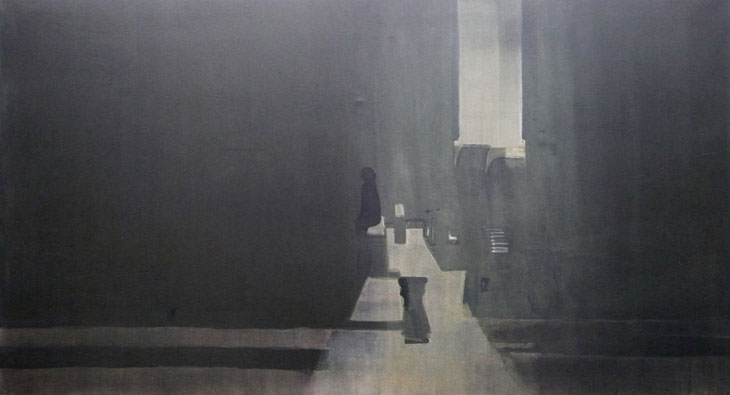

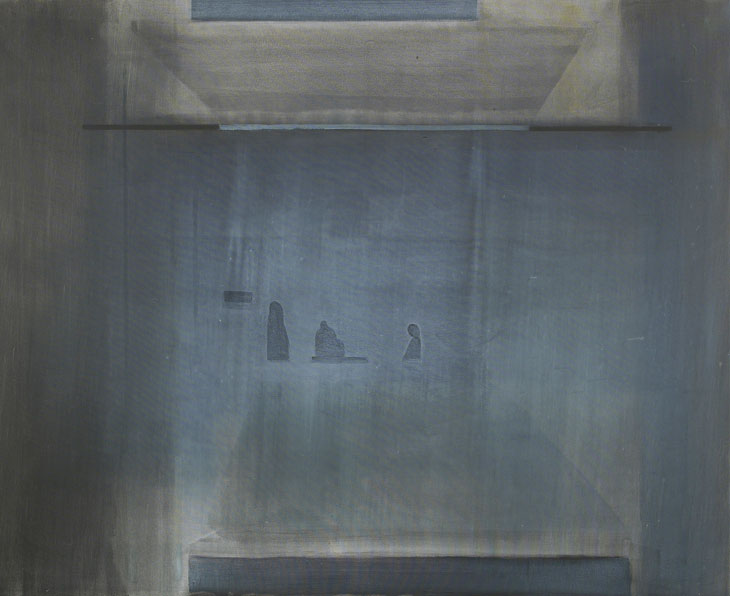
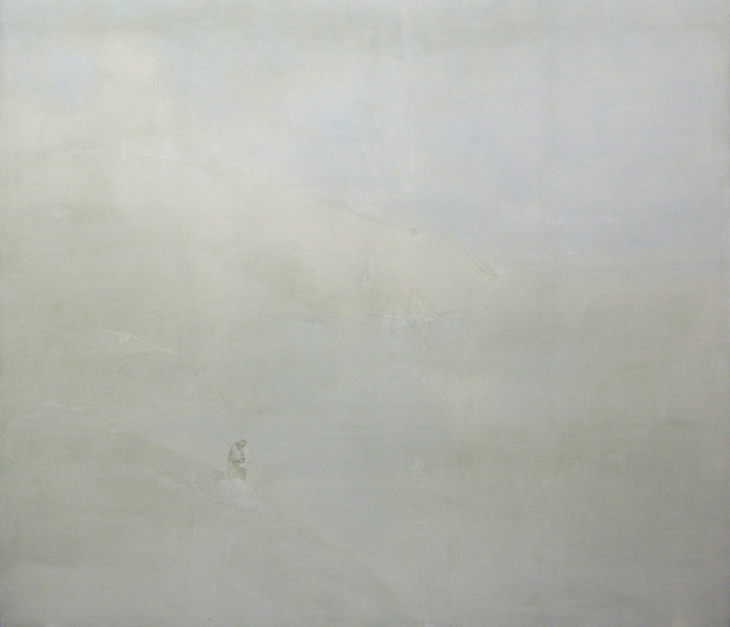

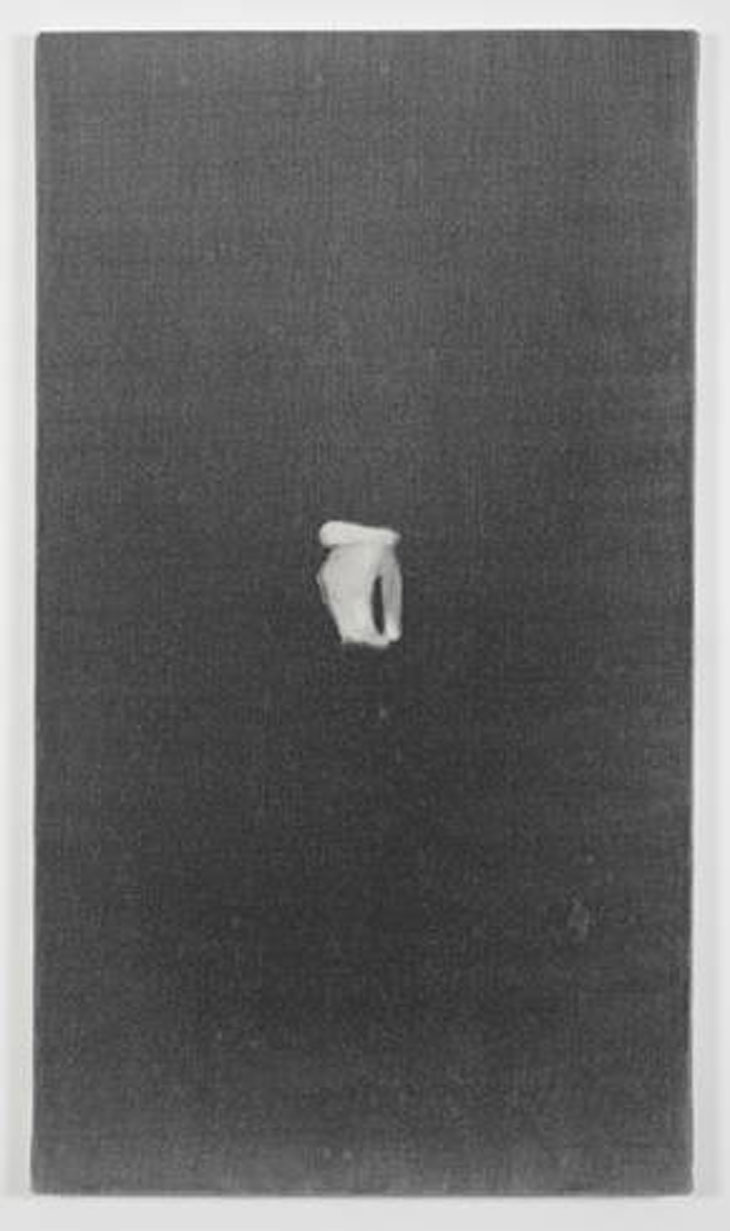



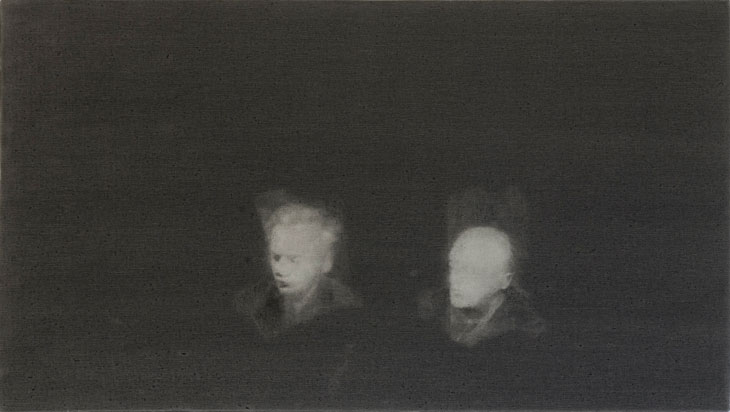
Jānis Avotiņš
In one of Avotiņš’ series, photographs of the heads of two sombre-looking Cold War-era bureaucrats are stripped of their original context andreappearwithin a dark emptiness. Their studied features look crudely eroded, as if rubbed onto, or rubbed out of, a temporary blackboard.
Two gossamer-like female figures – another solemn and almost faceless pair – appear to be walking out of a background of darkness. Their poses, soft silhouettes and the bright illumination on their bodies recall the long-exposure and bleached out feel of early photography, so often showing shapes similarly eked out of an enveloping darkness. They are beautiful, bleak and memorable, all at once.
Text by Lupe Nùñez-Fernández
Often using a minimalistic, monochromatic aesthetic reminiscent of fellow Latvian artist Vija Celmins, Avotiņš’ virtuosic imprimatura washes and technique blur and erase the specificity of his subjects, imbuing his images with an air of mystery, rather than nostalgia. They playfully engage with the relationshipsbetween analogue photography, the way history can edit and turn individuals anonymous, and with our own collective memory-making – impressions fading in and out of existence.
In one work, a ghostly, isolated right hand is placed exactly in the middle of a canvas, becoming the mysterious central focus within an overwhelming nothingness.In other works, singled out yet unrecognizable figures appear framed by a similar vacuum, soaked in washes accompanied by the symbolic material presence of the canvas’s grain. Recent compositions include architectural elements, but figures remain phantom-like, in a state of tension somewhere betweensketchily existing and melting into the background.
With their ghostly, alienated faces and figures reminiscent of Soviet-era photography, JÄnis Avotiņš thinly painted canvases draw us into a fragile, elliptic world haunted by collective memory.










